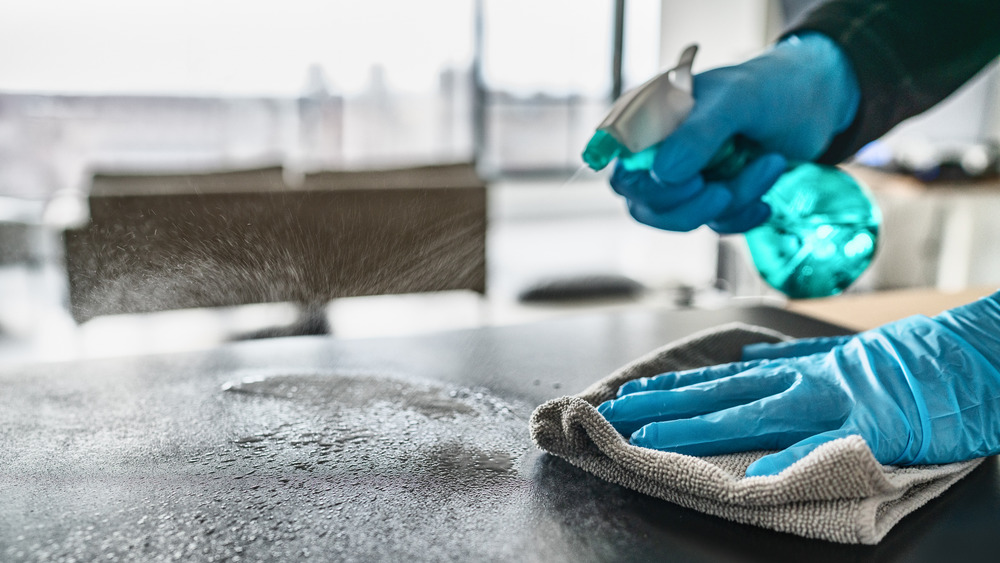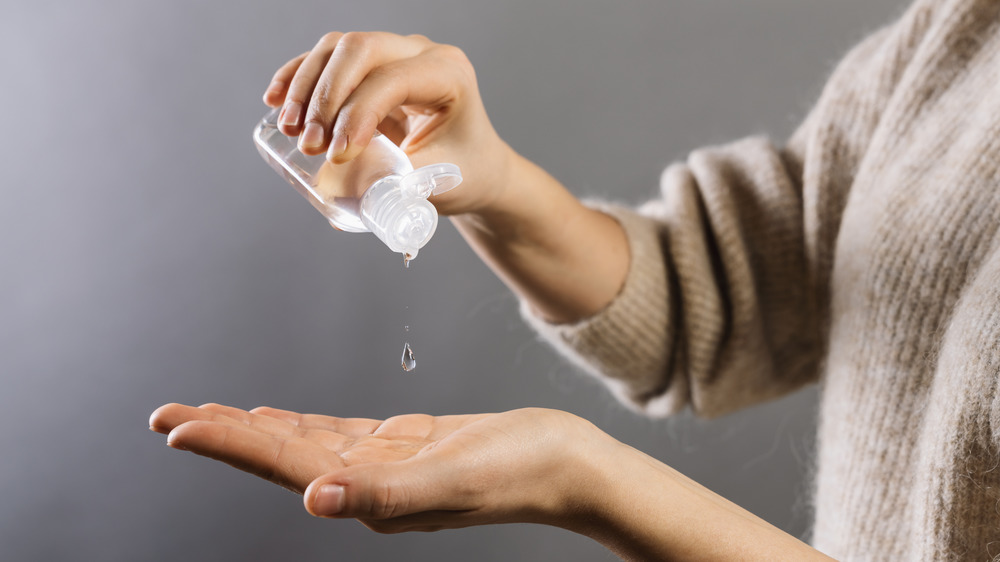The Real Difference Between Sterilizing And Disinfecting
If the pandemic has taught us anything, it's the importance of protecting yourself from COVID-19 and other illnesses by sterilizing and disinfecting potentially germ-ridden objects and surfaces. But what exactly is the difference between the two cleaning methods?
Disinfecting uses chemicals to kill germs and bacteria from objects or surfaces (via InStyle). Most household disinfectants, like Lysol or Clorox, come in wipe, spray, or liquid form and can be used to disinfect frequently used surfaces like doorknobs, tables, bathroom sinks, light switches, remote controls, and even your laptop and phone. While disinfectants are a great way to get rid of germs on inanimate objects, they should never be used on your skin.
Sterilization, on the other hand, removes all microorganisms on any given surface and is most commonly used in hospitals and other healthcare facilities. "Sterilization is a specific process with guidance on temperature, time, equipment, and other quality controls to do it effectively," Dr. Vandana A. Patel, a clinical advisor for the online pharmacy Cabinet, told InStyle.
Sterilization often requires the use of an autoclave, or steam sterilizer, to sterilize surgical instruments and medical devices. Other methods of sterilization include ethylene oxide gas, hydrogen peroxide gas, dry heat cabinets, ionizing radiation, infrared radiation, and advanced filtration (via Healthline).
What about sanitizing?
In addition to disinfecting and sterilizing, sanitizing is yet another method of cleaning. Sanitizing reduces the amount of germs and bacteria on objects and surfaces to a relatively safe level, according to the Centers for Disease Control and Prevention. While disinfectants kill 99.999 percent of germs on hard surfaces, sanitizers kill 99.99 percent of germs (via Health). In other words, sanitizers are effective, but they don't kill everything.
It's best to sanitize objects and areas that normally come into contact with food or food preparation, like cooking tools and kitchen countertops. You can also use hand sanitizers to clean your hands. However, you should only use hand sanitizer when you don't have access to soap and water. Hand sanitizer contains 60 percent alcohol and essentially kills most of the bacteria on your hands, even the good kind, so washing your hands with soap and water for 20 seconds is always the better option.


